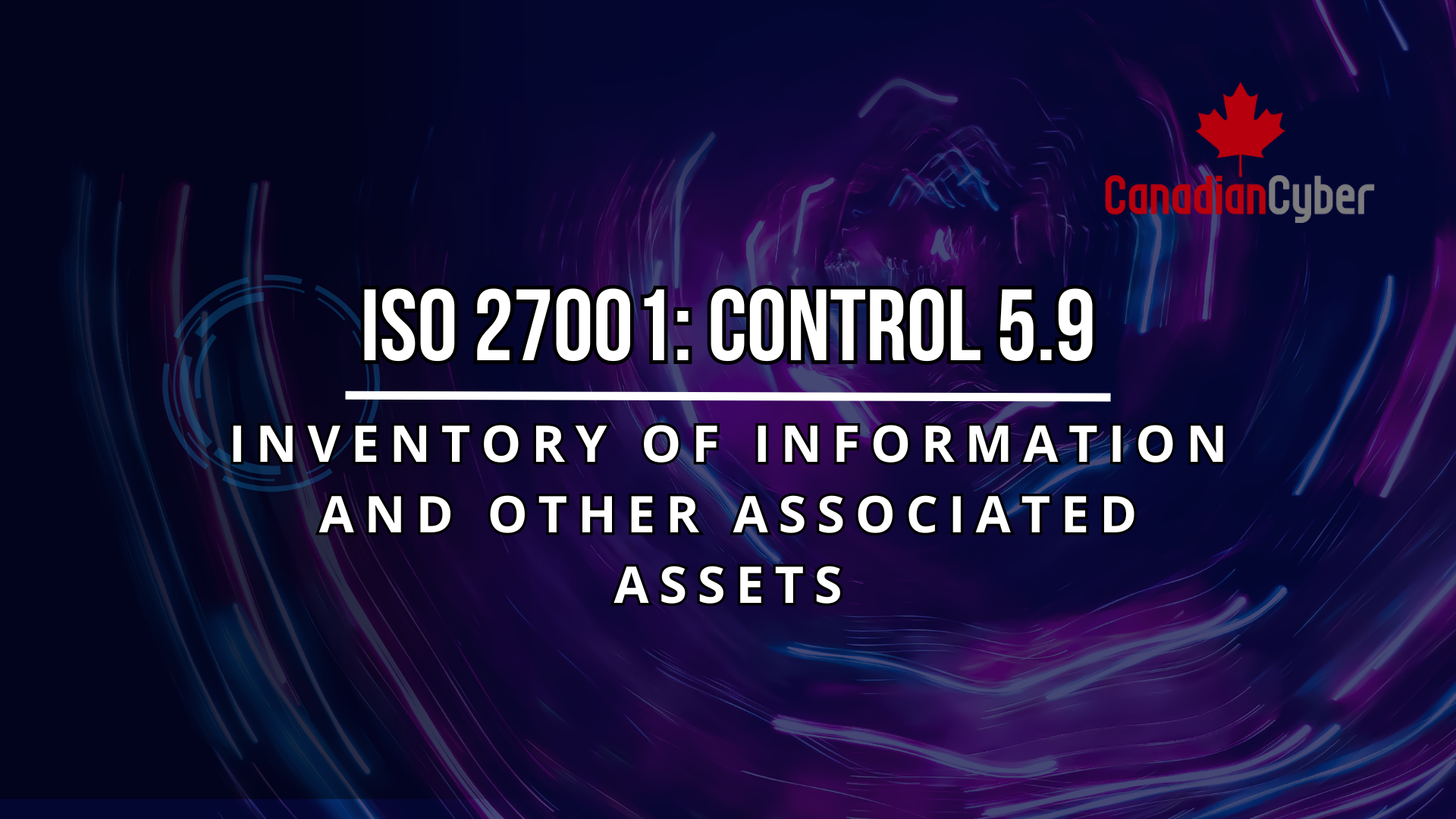ISO 27001 Control 5.9 ensures organizations keep a complete and accurate inventory of their information and associated assets. Learn why this “security treasure map” matters, how to implement it, and how Canadian Cyber can help you stay compliant and secure.

Imagine trying to guard a treasure chest without knowing where it is or worse, not knowing it exists.
That’s what many organizations do when they try to secure their business without keeping a proper inventory of information and assets.
ISO 27001 Control 5.9 makes it clear: you can’t protect what you don’t know you have. This control ensures organizations identify, document, and maintain an accurate inventory of information assets and the equipment, systems, and media they rely on.
🔒 Control Title: Inventory of Information and Other Associated Assets
📘 Source: ISO/IEC 27002:2022, Section 5.9
🧩 Control Category: Organizational
🔍 Attributes:
Control Type: #Preventive
Security Properties: #Confidentiality, #Integrity, #Availability
Cybersecurity Concepts: #Identify, #Protect
Operational Capabilities: #Asset_Management
Security Domain: #Protection_and_Defense
To identify and document all information assets and the associated equipment or systems, assigning clear ownership and ensuring they are properly protected throughout their lifecycle.
1) Define What Counts as an Asset:
2) Create and Maintain an Asset Register:
3) Assign Asset Ownership:
4) Integrate Classification and Handling:
5) Review and Update Regularly:
At Canadian Cyber, we treat your asset inventory like your security treasure map accurate, up-to-date, and easy to navigate.
We help clients in Canada and beyond discover hidden assets, classify them, and implement controls that actually match their value and risk.
We can help you build and maintain an ISO 27001-compliant asset inventory that keeps your organization secure and audit-ready.
👉 Click here to start your asset mapping journey.